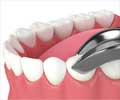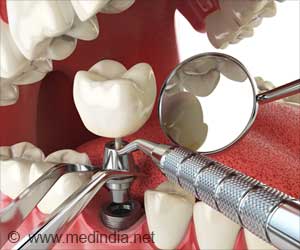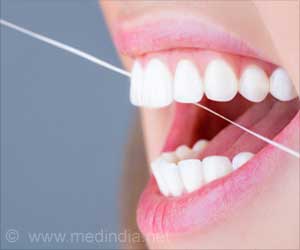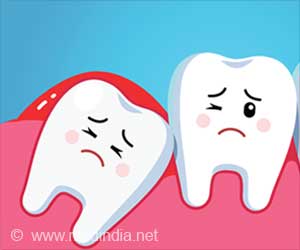Tiny particles formed as byproducts of diamond refining and mining strengthen the compound used to fill teeth and ward off infection.

Each year, more than 15 million root canal procedures are performed in the United States. Dentists' goal is to save their patients' teeth from infected dental "pulp" -- the part of the tooth that includes blood vessels and nerve tissue. During a root canal, inflamed dental pulp is removed and the empty space is then filled in with a polymer called gutta percha, which is used in part because it does not react within the body. But some root canals don't entirely remove the infection, and residual infection after root canals can lead to tooth loss.
In addition, traditional gutta percha has certain shortcomings, including a limited capacity to ward off infection and less-than-optimal rigidity.
To overcome those issues, the UCLA team developed and tested two types of reinforced gutta percha: One strengthened with nanodiamonds and another strengthened with nanodiamonds that had been pre-loaded with antibiotics.
To evaluate the first type, Sue Vin Kim and Adelheid Nerisa Limansubroto, study co-authors who are UCLA Dentistry students, filled actual teeth from human patients. Using conventional radiography and micro-computed tomography, or micro-CT, they showed that the nanodiamond-enhanced gutta percha could be used to fill the tooth. Like the traditional formulation, the nanodiamond-enhanced compound did leave small gaps in the canal -- where harmful bacteria could grow -- but the CT imaging showed that the enhanced material filled the space just as effectively as traditional gutta percha.
"Validating this novel material in teeth extracted from patients serves as a strong foundation for the potential translation of nanodiamond-reinforced gutta percha toward clinical testing," said Dean Ho, a senior author of the study and a professor of oral biology and medicine and co-director of UCLA Dentistry's Jane and Jerry Weintraub Center for Reconstructive Biotechnology.
Advertisement
"The nanodiamond-enhanced gutta percha combines many desirable properties into a single platform, including vastly improved mechanical characteristics and the ability to combat bacterial infection following a root canal," said Dong-Keun Lee, a postdoctoral scholar in Ho's lab.
Advertisement
"Through their ingenuity and collaboration, Professor Ho's team is poised to transform the way that dentistry is practiced," said Dr. No-Hee Park, dean of UCLA Dentistry and a co-author of the study.
During the next two years, the team plans optimize the formulation of the nanodiamond-reinforced gutta percha and begin clinical trials at UCLA.
Source-Eurekalert














